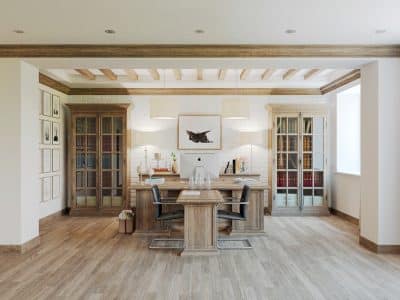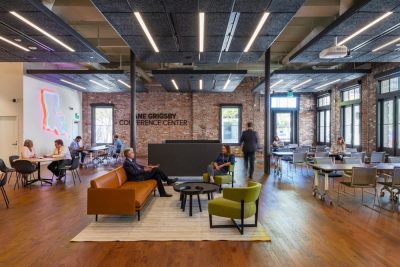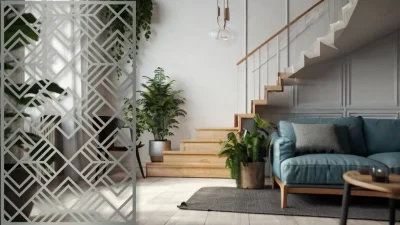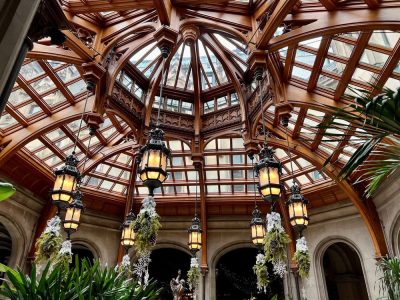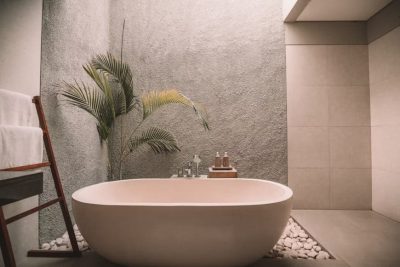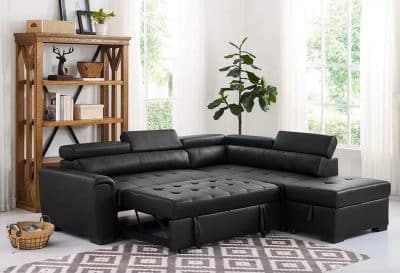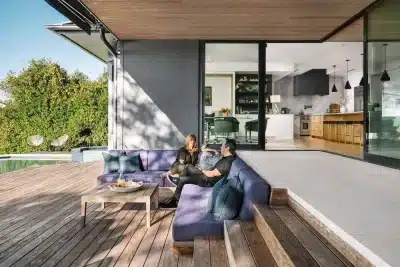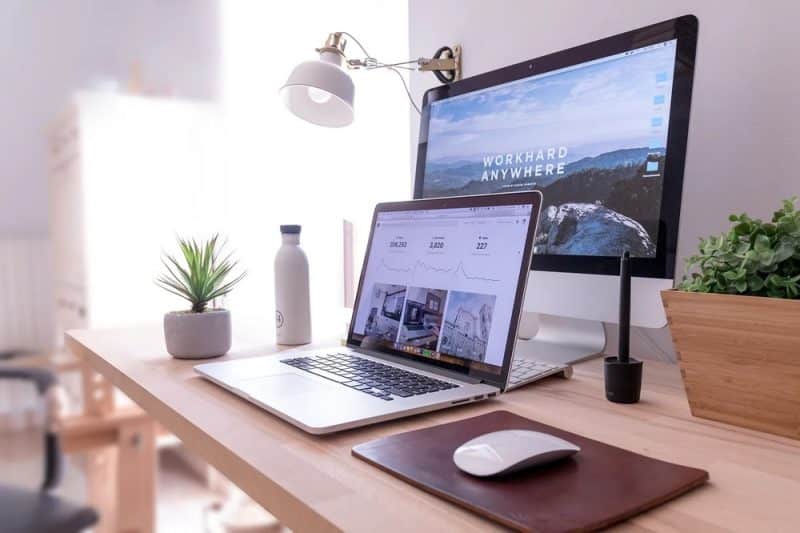
For companies, office environments impact more than just worker comfort. Well-designed workspaces boost employee productivity, health, recruitment, and retention saving costs while conveying brand quality outwardly. However, optimizing office layouts depends on balancing myriad facets into harmonious productive spaces that match company needs.
The Importance of a Well-Designed Office Space
A well-designed office space is an investment in your company’s future. It goes beyond aesthetics, impacting various aspects of your business operations. Some key reasons why office design matters:
- Enhanced Productivity: Comfortable noise-controlled environments, ergonomic desks, customizable temperature zones and access to collaboration technology enhance work completion rates and minimize distractions.
- Employee Well-being: Natural light, air circulation, roomy workstations, and calming décor attributes reduce workplace stress and injury preserving professional longevity and satisfaction.
- Positive Brand Image: Modern aesthetics conveying company values through open, vibrant interiors and technology-enabled facilities make stronger first impressions attracting talent and customers interpreting spaces as indicators of innovation priorities and success.
- Talent Attraction and Retention: Appealing layouts and high-end amenities project employee value propositions securing top applicants and inspiring staff retention compared to drab cramped offices straining morale and performance.
- Cost Savings: Although counterintuitive initially, customized offices lower turnover and absenteeism costs while supporting growth capacities through optimized sq. reducing the need to lease additional external spaces short term as companies scale.
Key Elements of Office Design
While unique considerations apply across industries, core design facets enable optimized work environments:
- Space Planning: Dimensional blueprinting ensures room sizes, hallway widths, and common lounge capacities suit current and projected staff volumes for the intended lease duration based on headcount growth trends.
- Ergonomics: Expert review prevents repetitive muscle strains by correctly configuring monitor alignments to seating, keyboard trays, standing desks, and wrist rests tailored to match employee activities through their typical shifts.
- Lighting: Illumination levels must balance screen reflection reductions with biological energy stimulation aligned to circadian rhythms through brightness and temperature adjustments situating employee positions appropriately throughout offices.
- Acoustics: Audio absorbing building materials, white noise buffers, and spatial planning preventing noise disruptions improve concentration requisite for focus-intensive duties.
- Technology Integration: Seamless technological capabilities like video conferencing, wireless projection and device charging stations built into architectural elements support collaborative hybrid team engagements.
- Aesthetics: Finishes, artwork, and ornamental lighting fixtures contribute significantly toward improving morale and corporate identity when thoughtfully incorporated into spaces reflecting brand personalities and design unity.
Office Design Trends
Innovations continuously enhance office habitats as research links environments to human performance. Here are some emerging trends:
- Biophilic Design: Integrating natural elements like living green walls, daylight simulations, and reclaimed woods promotes worker health, stress reduction, and environmental identity increasingly valued by millennials and visionary companies alike.
- Flexible Workspaces: Fluid spaces accommodate evolving needs via movable architecture promoting choice and empowering staff to select workspaces optimizing activities from open collaboration lounges to private focused rooms.
- Smart Offices: Sensor-activated temperature and lighting controls tailored to occupancy patterns optimize energy efficiency while analyzing space usage and environmental quality indicators and managing offices digitally.
- Wellness-Focused Design: Dedicated quiet spaces allow recharging while ergonomic furnishings plus fitness/nap rooms support physical health priorities today’s talent seeks to prevent burnout.
- Sustainable Design: Eco-friendly selections like plant-based materials, non-toxic paints, and renewable sourced furnishings satisfy corporate sustainability goals while lowering tenant footprint costs.
Designing Different Types of Office Spaces
Unique office settings each necessitate tailored planning considerations around:
- Open-Plan Offices: Accessible collaborative environments gain acoustic-visual separation through noise-reducing partitions and plants. Maximizing sightlines fosters team cohesion.
- Private Offices: Enclosed leadership spaces prominently display brand identities allowing secluded conversations and focused individual work shields from distractions. Integrate technology facilitating remote meeting engagements.
- Co-Working Spaces: External amenity-rich flexible workspaces rented hourly expand operations without overextending leases. Varied seating options welcome diverse networking and events.
- Home Offices: Remote work essentials like ergonomic desks/chairs, dependable WiFi, Organization solutions, and professional teleconferencing backgrounds enable continuity and efficiency.
Tips for Choosing Office Furniture
Tactical furniture decisions make or break spaces. Consider these factors when outfitting offices:
- Prioritize Ergonomics: For ease of movement of your office chair, acquire the best glass chair mat. Seek movements accommodating varied users and force-reducing constructions preventing injury for extensive computer-based roles or client meetings.
- Consider Your Workspace: Measure room dimensions planning modular furnishings fitting available floor plans for current and future layout permutations.
- Think About Functionality: Determine usage frequency, storage needs, and mobility requirements selecting purpose-built items like pedestals, cabinets, and casters accordingly.
- Style and Aesthetics: Cohesive finishes, brands, and ornamental light fixtures project professionalism aligned with the industry. Solicit designer guidance coordinating rooms holistically.
- Quality and Durability: Heavily utilized common area furnishings endure more wear. Prioritize performance textiles and stable strong frames warranting costs over fragile fast furnishing fads.
- Budget: Weigh value engineering lower priced quoted options calculating implied lifespan for replacements given quality variances balancing expenses over midterms.
- Maintenance: Catalog maintenance procedures like cleaning codes for surfaces and leather conditions prolonging investments extending usable lifespan before disposal recycles.
Incorporating Office Accessories and Decor
Office accessories and decor can add personality and style to your workspace. Here are some ideas for incorporating accessories and decor into your office design:
- Artwork: Thoughtfully curated paintings, photographs, or wall sculptures showcasing staff talents boost environs reflecting brand histories.
- Plants: Integrating natural greenery energizes spaces aiding concentration while improving indoor air quality through active biophilic elements connecting nature.
- Rugs: Grounding furnishings into spaces, dimension-appropriate rugs define room boundaries unifying furniture groupings for intimate meetings or lounges fostering creativity.
- Lighting: Decorative pendant luminaires supplementing ambient illumination sculpt rooms with shapes enhancing architectural details for distinctive sophistication.
- Personal Touches: Allowing personal framed photos, achievement acknowledgments, and cultural artifacts display a commitment to enriching environments through diversity support and attracting inclusive talent.
Maintaining a Clean and Organized Office
Without vigilant upkeep, disarray accumulates, so implement consistent cleanliness policies promoting professionalism:
- Establish Cleaning Schedules: Maintain tidy workstations clearing debris and wiping surfaces daily while comprehensive office cleansing like carpet shampooing occurs monthly from janitorial contracts.
- Declutter Regularly: Sort through physical materials and digital documents routinely consolidating active projects and archiving inactive items into organized storage freeing up capacities benefiting employees.
- Invest in Storage Solutions: Purchase sufficient cabinets, shelves, and shared drives coordinating categorically containing themes and clearly storing related components securely while maintaining easy access.
- Encourage Cleanliness: Provide convenient waste bins, cleaning wipes, and organizational tools empowering staff to sustain unsoiled spaces themselves preventing messes from accumulating into daunting weekend projects eventually.
- Celebrate Success: Recognize groups who collaboratively uphold standards motivating participation through monthly awards or employee nomination callouts reinforcing achievements and keeping environments orderly.
Conclusion
Well-strategized office environments directly support employee ability delivering success by both attracting and empowering talent. Consequently, the value derived from investments into deliberately improving facilities pays dividends through strengthened recruitment, amplified innovation, and richer corporate identities transmitted internally and externally. Committing upfront efforts into designing flourishing workspaces suited to unique organizational needs and policy goals catalyzes growth for years as surroundings themselves drive excellence.

